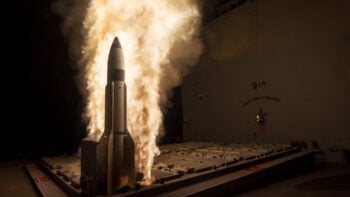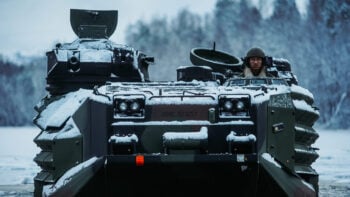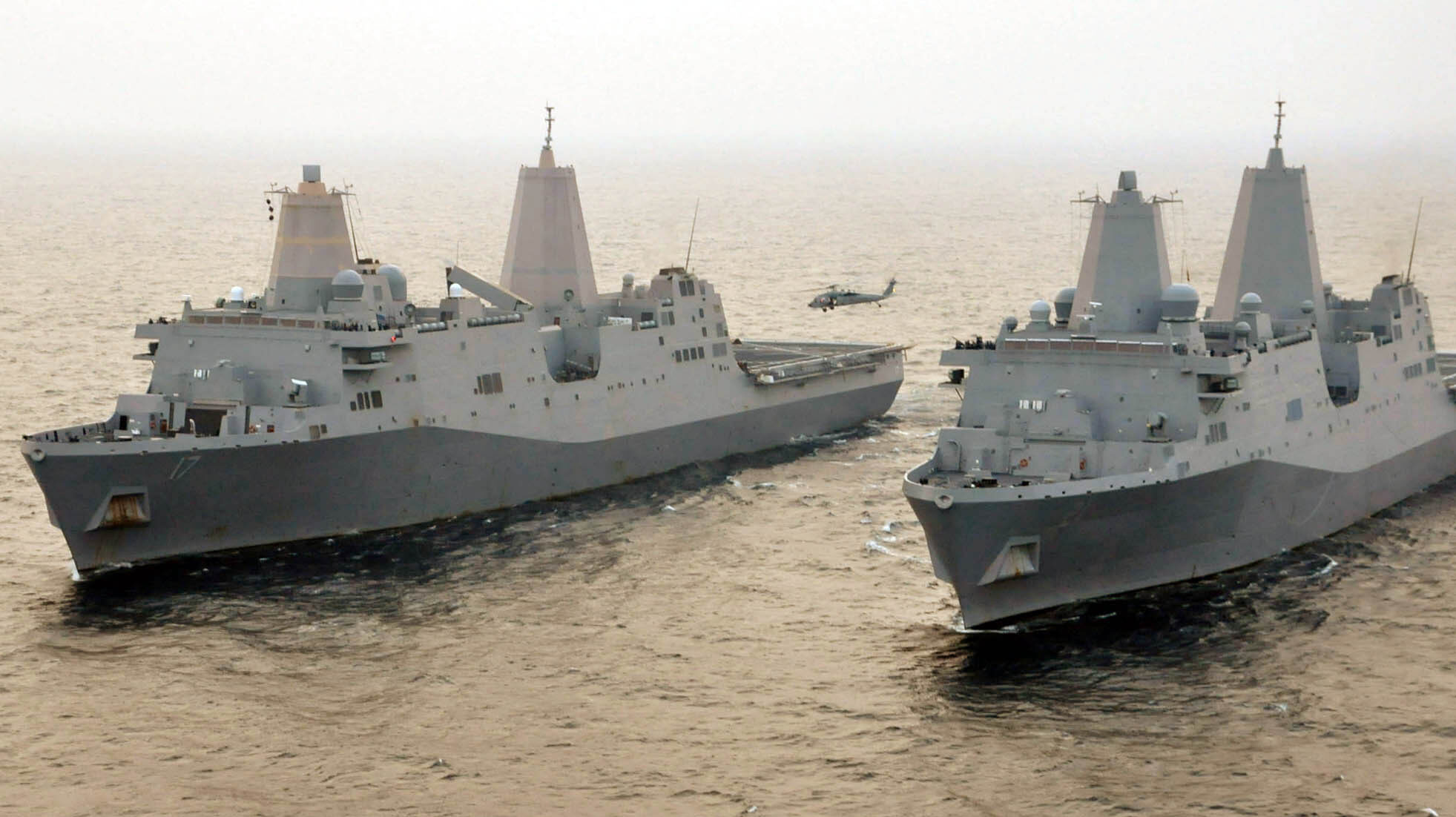
The amphibious transport dock ships USS San Antonio and USS New York are underway together in the Atlantic Ocean off the coast of Virginia. San Antonio is conducting ship handling drills with New York during San Antonio’s second phase of sea trials, which are primarily focused on combat systems testing and developing crew proficiency. (U.S. Navy photo by Petty Officer 1st Class Edwin F. Bryan)
WASHINGTON — In the aftermath of a powerful February earthquake in Turkey, Marine Corps’ leadership was publicly lamenting its response to aid an ally. The service’s “best option,” a Marine Expeditionary Unit hauling shelter, medical supplies and other humanitarian assistance aboard a big deck amphibious ship, was not available.
“When the earthquake happened in Turkey, a NATO ally, the MEU was not on station and it should have been,” Lt. Gen. Karsten Heckl, one of the commandant’s deputies, told lawmakers in March.
The commandant himself, Gen. David Berger, in a separate interview with Defense One said as a service chief, he owes the president and the defense secretary “options…all the time. Here, I felt like the best option, we couldn’t offer them because we have the Marines and the equipment and they’re trained, [but] we didn’t have the ships.”
Now, in the wake of the dramatic evacuation of American diplomats and citizens from Sudan, an African nation with two opposing generals threatening war, the Marines again were unable to provide the combatant commander with its premiere capability for evacuations, a senior official told Breaking Defense.
It’s a perceived failure about which top Marine officials have been unusually and publicly blunt. That bluntness, analysts and former military officials say, has been driven by a cultural ethos that demands they be the nation’s “crisis response force” as well as a genuine need to shore up the embattled amphibious fleet.
“I feel like I let down the combatant commander cause Gen. [Michael] Langley needs options,” Berger said during an April 28 congressional hearing of the four-star Marine Corps general leading US Africa Command. “He didn’t have a sea-based option [from the Marine Corps]. That’s how we reinforce embassies. That’s how we evacuate them. That’s how we deter.”
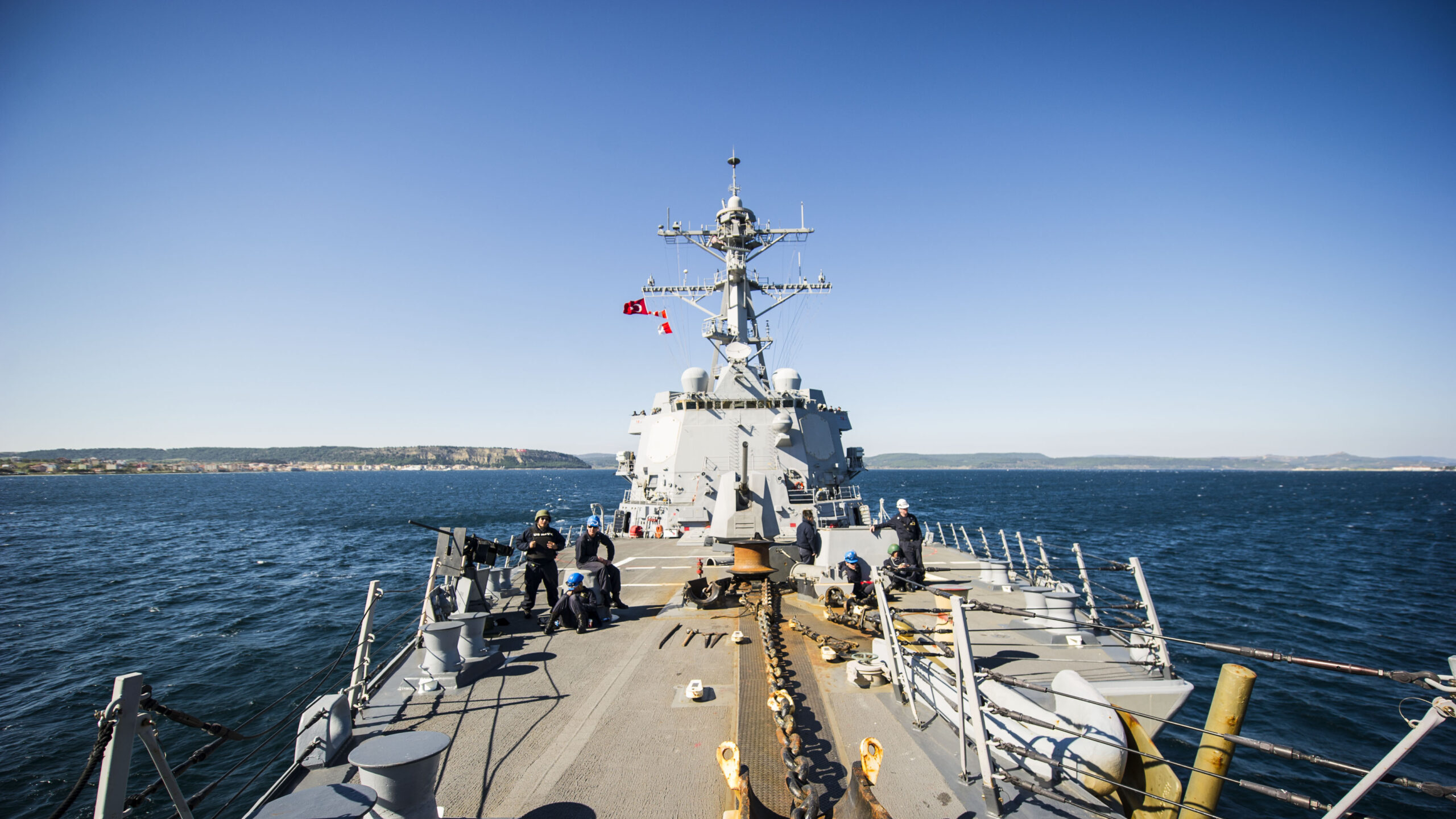
The USS Truxtun (DDG-103) was one of the Navy ships sent to waters off the coast of Sudan to support the State Department as it managed evacuations of diplomats in April and May 2023. (U.S. Navy photo by Mass Communication Specialist 3rd Class Scott Barnes/Released)
A Problem, A Commander, A List of Options
In the US military, when a crisis emerges around the world, it’s the region’s combatant commander — in the case of Sudan, that’s Langley at AFRICOM — who is presented with a list of options for ways to respond.
What Berger alluded to during the hearing with House lawmakers, but did not spell out explicitly, is that amphibious ship readiness prevented it from offering the full power of a Marine Expeditionary Unit and Amphibious Ready Group (MEU/ARG) to AFRICOM. A senior official who spoke on the condition of anonymity put it more clearly to Breaking Defense.
“While Marines did provide support to the evacuation of the embassy, it is our MEU/ARG that are trained specifically for evacuations like this,” the senior Marine official said. “Ideally, there would be a consistent MEU/ARG presence in the Mediterranean that could have been an option for the combatant commander. There was no MEU/ARG in the region due to the lack of ready amphibious ships, and so it wouldn’t have been an option in this case.”
Breaking Defense sought comments from the Marine Corps about the situation in Sudan and how ship readiness may have hindered its ability to respond, as it did in February following Turkey’s earthquake. A service spokesman deferred questions to AFRICOM, the Joint Staff and the Office of the Secretary of Defense.
US AFRICOM spokesman Navy LCDR Timothy Pietrack told Breaking Defense that “as a matter of policy and security, we do not speculate on potential future operations or force movements.” A spokeswoman for the Joint Staff declined to comment. A spokesperson for the Office of the Secretary of Defense did not respond by press time.
Responding to Sudan, the US Navy did send three ships to waters near the African nation: the destroyer Truxton (DDG-103), the expeditionary sea base Lewis B. Puller (ESB-3) and the expeditionary fast transport Brunswick (T-EPF-6). A Navy spokeswoman did not respond to Breaking Defense’s questions about the deployment by press time.
Navy brass during the April 28 hearing indicated the number of American citizens who wish to leave Sudan and are seeking the government’s assistance is relatively small. That means that the full capability of a big deck amphibious ship — a vessel capable of holding thousands of people — may not be necessary.
Further, the Pentagon over the weekend announced the defense secretary approved a request from the State Department to assist Americans in leaving Sudan using air and land assets. “We are moving naval assets within the region to provide necessary support along the coast,” said Sabrina Singh, deputy Pentagon press secretary. The prior evacuation of US embassy personnel, announced on April 23, was done largely by special operations forces from other services, mostly by helicopter out of Khartoum to neighboring Djibouti.
That left the Marines, who aim to be ready to respond in an emergency, largely on the sidelines, even as more and more Americans sought a way out.
“We have to be prepared, of course, for the full range of operations in places we might not expect and probably on timelines we did not anticipate,” Berger has previously told lawmakers. “And that’s why your Marine Corps’ ability to respond to crises in any clime and place is essential to our national security.”
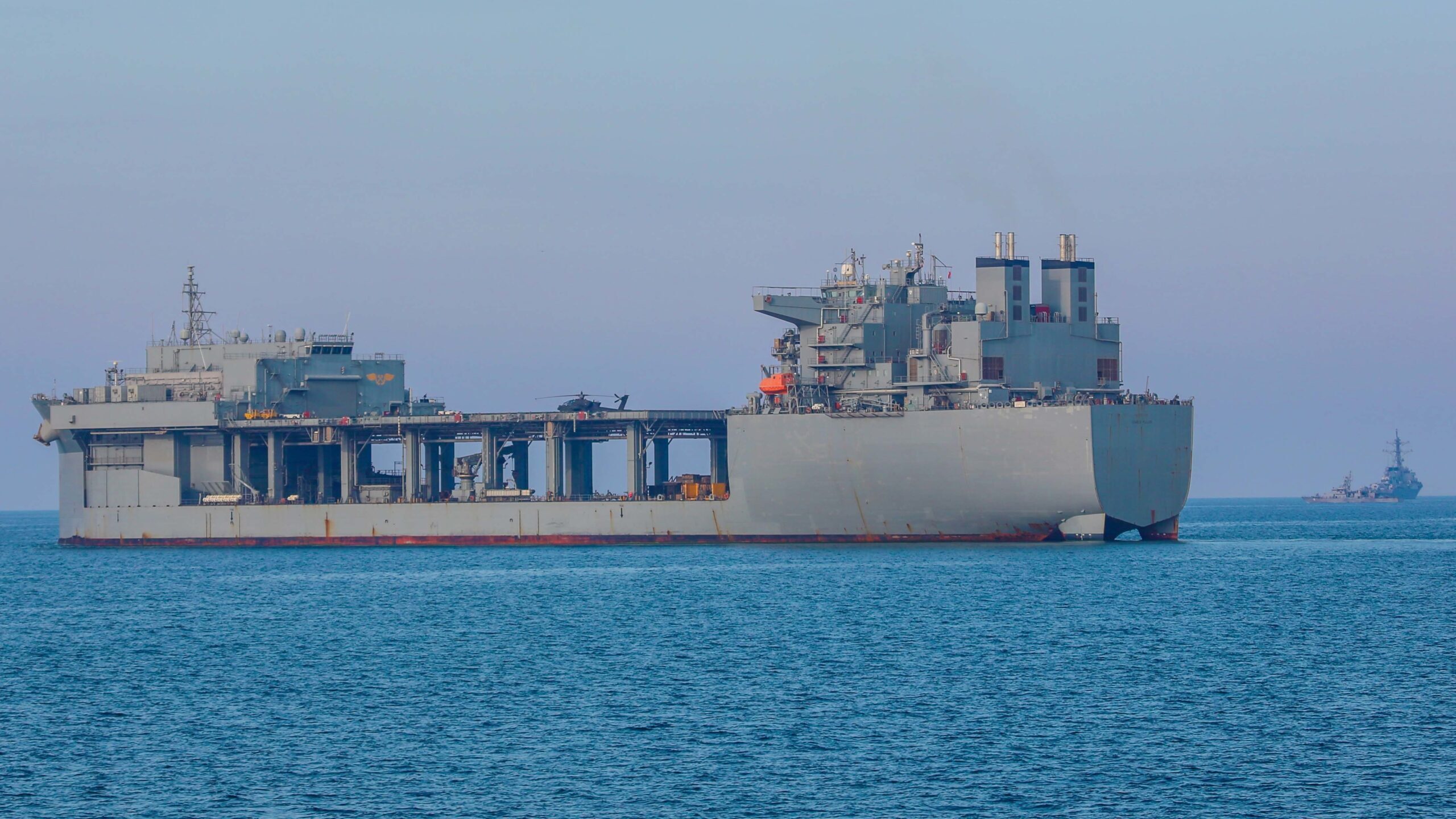
The expeditionary mobile base ship USS Lewis B. Puller (ESB 3), left, patrols the Arabian Gulf. (U.S. Army photo by Spc. Duong Le)
An ‘Uncomfortable’ Reality Sinking In
Analysts said that at the heart of the Marines’ frustration is pride: The service bills itself as the nation’s crisis response force, and in both cases, what they called the “best” response it could offer wasn’t ready for the Joint Force or the country’s allies.
Andrew Metrick, a fellow at the Center for New American Security, told Breaking Defense it’s about “cultural ethos,” as well as new questions about the future of the force.
“The fact it’s bothering parts of the Corps, I think is reflective of the larger ongoing debate that you see … around Force Design 2030. There is an ongoing debate within the Corps and within the retired community about Marine Corps identity,” he said. “So, when things like Turkey or things like the current [situation] in Sudan come up, and other aspects of the US Joint Force are responding, it’s uncomfortable because [the Marines] look at it as something that historically they have done.”
Evacuations have been traditionally a Marine Corps mission. One of the most recent high-profile evacuations that took place was the non-combatant evacuation out of Afghanistan in August 2021, closing out the US presence in that country following two decades of conflict. Three infantry battalions, two Marine Corps and one Army, were sent to Kabul International Airport in July 2021 to assist with evacuation efforts. Eleven Marines as well as a Navy corpsman and a soldier were killed by a suicide bomber during the operation.
In 2014, Marines were integral to evacuating Americans from the South Sudanese city of Juba. Before that, the service conducted similar operations in Lebanon, Rwanda, Albania and elsewhere. A Marine Corps University website highlights 15 different non-combatant evacuations the Marines executed between 1975 and 2006.
“The [evacuation] mission is very visible and brings the Corps a bunch of goodwill,” Metrick said. “Same with humanitarian assistance [and] disaster relief.”
But now the US, Metrick said, has a “tremendous amount of capability for crisis response that is not just in the Corps.” And the force’s slimming down as part of Force Design 2030 may now be showing itself, according to John Ferrari, a fellow at the American Enterprise Institute.
“They put themselves on a diet, and all of a sudden when there’s a lot of phone calls, they can’t answer it. Not enough people, not enough units, not enough capacity,” said Ferrari, a retired Army officer. “It’s not a linear descent in capability [and] capacity — a smaller force spins faster to do fewer missions.”
As the Marine Corps describes it, Force Design 2030 has been an ongoing effort to overhaul the service to make it ready for the future fight. When the plan was first published, Berger reined in the service’s longstanding requirement of 38 amphibious ships — now down to 31 — in lieu of a new fleet of “Landing Ship Medium” designed for the island-hopping missions envisioned in the Indo-Pacific.
But the Navy’s new budget goes further, calling for a “pause” in amphib building altogether. Capacity and the risk it pushes down is at the center of the Marines’ relentless lobbying of Congress to maintain that minimum of 31 amphibious ships.
“The inventory is going to go down, the risk is going to go up,” Berger said in March when asked about the Pentagon’s decision to not buy new amphibious ships in the fiscal 2024 budget. “The risk meaning our ability as a nation to respond when needed, and sometimes you can’t predict that the risk goes up — that a combatant commander doesn’t have the right tool for the job. That’s the risk.”
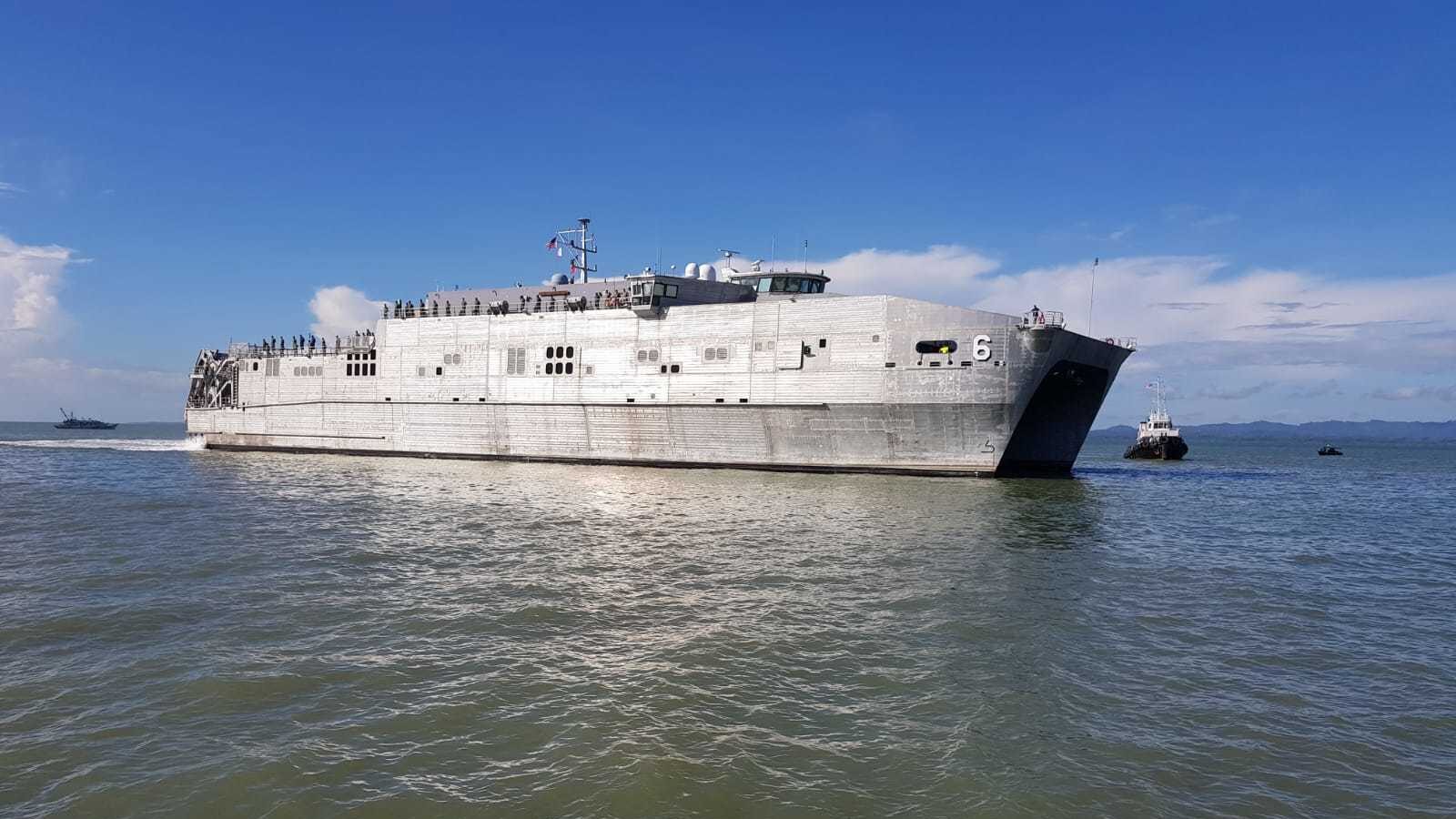
Military Sealift Command expeditionary fast transport USNS Brunswick (T-EPF 6) pulls in to Tawau, Malaysia. The Brunswick joined two other Navy ships headed to Sudanese waters at the end of April. (U.S. Navy photo by Mass Communication Specialist 2nd Class Joshua Fulton/Released)
A ‘Great Strength’ And A Budget Battle
The Marine Corps has been aggressively making its case to continue purchasing amphibious ships, despite the “strategic pause” the Navy announced earlier this year.
Top Marine officials, Berger included, have not been shy about using Turkey and Sudan as specific evidence of a faltering capability. In his more recent testimony, it was Berger, not lawmakers, who brought up the Marines’ relative inability to respond to Sudan.
The Navy’s ships have apparently been successful so far in their mission near Sudan — with or without an amphib standing by — which raises questions about whether the Marine Corps’ lobbying is overplaying the necessity of the ARG/MEU in either situation.
But analysts said the Marines’ characterizations of the ARG/MEU in terms of its usefulness for evacuations and humanitarian assistance were not overblown.
“Their great strength is that they can wait offshore for extended periods, if necessary, waiting for a crisis to either peak or fade away. They can do this without causing any local disturbance or requiring any foreign government’s permission,” said Mark Cancian, an analyst at the Center for Strategic and International Studies and a retired Marine.
Metrick, the CNAS fellow, said the ARG/MEU possesses numerous capabilities in a single package, such as logistics, engineering, aviation, command and medical.
“This isn’t to say that other parts of the Joint Force can’t be put together to achieve a similar result, just nothing is as self-contained,” Metrick added. However, he argued that the one area where amphibious ships may not be optimal is when the military can secure an airport. In that case, he said, the Pentagon’s airlift options are preferable.
Steven Wills, a naval analyst at the Center for Maritime Strategy, agreed the amphibs would be the “right choice” for evacuation missions, but noted that open-source data shows no expeditionary strike groups were in proximity to Sudan early last week when the decision was made to advise Americans to leave. Over the weekend, hundreds of Americans made an overland trip to the Port of Sudan, where they were picked up by the Navy ships.
At least part of why there were no amphibious ships in the region alludes back to what Heckl, the commandant’s deputy, told lawmakers and what the senior Marine official told Breaking Defense: The number of ships available to be on station, given all the other commitments the Marine Corps has, was simply insufficient.
Bryan Clark, a fellow at the Hudson Institute and formerly a special assistant to the chief of naval operations, said, “ARGs are supposed to support one seven-month deployment every 27-32 months, and be able to deploy again for a few months after they get home. Due to maintenance delays and material failures, every ready amphib is being used for MEU deployments.”
Berger during the Friday hearing encapsulated why he sees the amphibious fleet’s readiness as so critical to both the Pentagon and the United States as a country.
“Here’s my concern, the first time this nation can’t respond to a crisis and one of our adversaries can, [that is] probably the last time we get asked,” he said.
South Korea plans $4B in new weapons investments, including $583M of SM-3s
In addition, South Korea will buy four new frigates and create a new air-to-air missile; all told, the three projects will represent roughly $4 billion in investments.

















